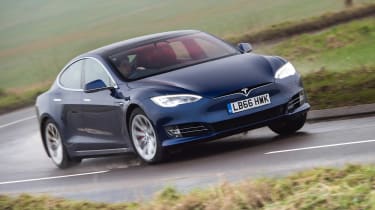Tesla Model S review – engine and gearbox
The Model S’s electric motors offer near-silent propulsion and superb grunt and traction
The standard Model S uses a pair of electric motors – one at the front axle, and the other driving the rear. The Plaid goes further with a triple-motor layout, which uses two units to drive a rear wheel each for more power and precise torque vectoring at the back.
Because the Tesla Model S doesn’t have a regular engine it doesn’t use a traditional gearbox with multiple ratios and some means of selecting them. Instead, the drive from the high revving electric motors is sent through a reduction gear, which converts high motor speeds to more appropriate wheel speeds. The motors provide enough torque at any revs and are able to spin at a larger variation of speeds than an internal combustion engine, there is no need for a gearbox – particularly in the case of the Plaid, which uses carbon-sleeved rotors for its drive units to reach extremely high revs 200mph flat out.
The savage acceleration of the Model S means you don’t long for the noise and drama of an internal combustion engine. But in an age where engines that have had all their character lobotomised by turbochargers have become the norm, that’s perhaps not a huge surprise. Ten years ago, when saloon cars had big burbling V8s or screaming V10s the Tesla’s effective but clinical approach might not have been quite enough to distract die-hard enthusiasts.



